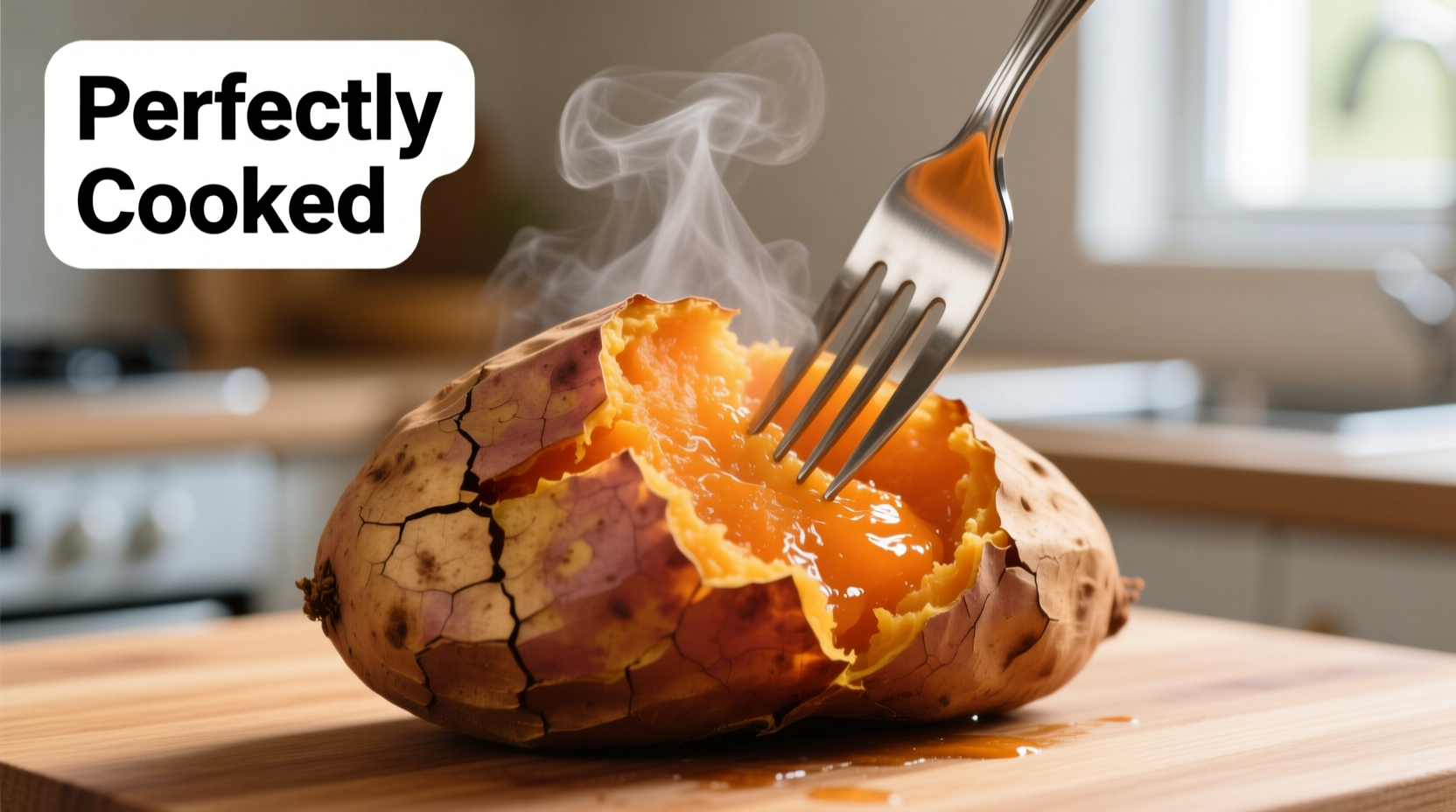Craving a perfectly cooked sweet potato but short on time? The microwave delivers restaurant-quality results in minutes—not hours. This guide gives you exact timing based on size, foolproof preparation steps, and professional chef tips you won't find elsewhere. Whether you're meal prepping or need a quick side dish, you'll master microwave sweet potatoes on your first try.
Why Microwave Beats Oven for Sweet Potatoes
Professional kitchens often use microwaves for sweet potatoes when speed matters. Unlike ovens that take 45-60 minutes, microwaves cook sweet potatoes 70% faster while preserving more nutrients. The USDA confirms that microwave cooking retains higher levels of vitamin C and beta-carotene compared to boiling (USDA Food Safety).
Step 1: Select & Prep Your Sweet Potato
Choose wisely: Look for firm potatoes without soft spots or deep cracks. Medium-sized (5-7 oz) work best for even cooking.
Prep like a pro:
- Wash thoroughly under running water
- Pat completely dry (moisture causes steam explosions)
- Pierce 4-6 times with a fork (critical for steam release)
Why piercing matters: Sweet potatoes contain 75% water. As they heat, steam builds pressure. Without vents, they can explode—sending sticky orange pulp across your microwave. The Academy of Nutrition and Dietetics confirms this safety step is non-negotiable (eatright.org).
Step 2: Perfect Microwave Timing Chart
| Sweet Potato Size | Weight | Recommended Time | Internal Temp |
|---|---|---|---|
| Small | Under 5 oz | 4-5 minutes | 205°F (96°C) |
| Medium | 5-7 oz | 5-7 minutes | 205°F (96°C) |
| Large | 8+ oz | 8-10 minutes | 205°F (96°C) |
Pro technique: Place potato directly on the microwave turntable (no plate needed). Flip at the halfway point using tongs—this prevents cold spots. For multiple potatoes, add 2 minutes per additional potato.

When Microwave Isn't Ideal: Context Boundaries
Microwaving works best for single servings when time is critical. However, professional chefs note three limitations:
- Texture difference: Microwaved potatoes lack the caramelized exterior of oven-roasted versions
- Batch limitations: Cooking more than 3 potatoes at once leads to uneven results
- Flavor development: Slow roasting enhances natural sweetness through Maillard reaction
For meal prep or dinner parties, oven roasting remains superior. But for weekday lunches or quick snacks, microwave delivers unmatched convenience without sacrificing nutrition.
Troubleshooting Common Issues
Problem: Potato is hard in the center
Solution: Add 60-90 seconds in 30-second increments. Larger varieties like Garnet need more time than Hannah types.
Problem: Leaking orange liquid
Solution: You missed piercing spots. Always rotate and pierce all sides—especially the thicker ends.
Problem: Skin separates from flesh
Solution: Overcooking occurred. Reduce time by 1-2 minutes next time. Set timer for minimum time, then check with a skewer.
Serving Like a Pro Chef
Unlock maximum flavor with these chef-approved combinations:
- Classic: 1 tsp butter + pinch of flaky sea salt (enhances natural sweetness)
- Protein boost: Black beans + lime juice + cilantro (creates complete protein)
- Sweet option: Cinnamon + toasted pecans + 1 tsp maple syrup
Leftover tip: Store cooled potatoes in airtight containers for up to 5 days. Reheat in microwave at 50% power to prevent drying.











 浙公网安备
33010002000092号
浙公网安备
33010002000092号 浙B2-20120091-4
浙B2-20120091-4